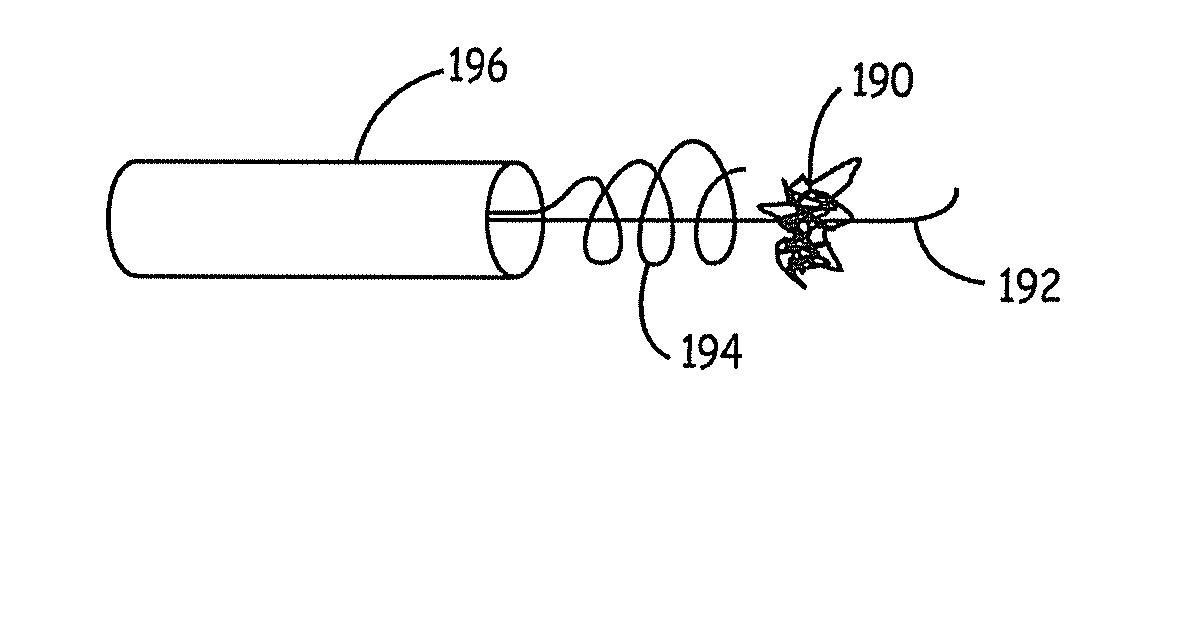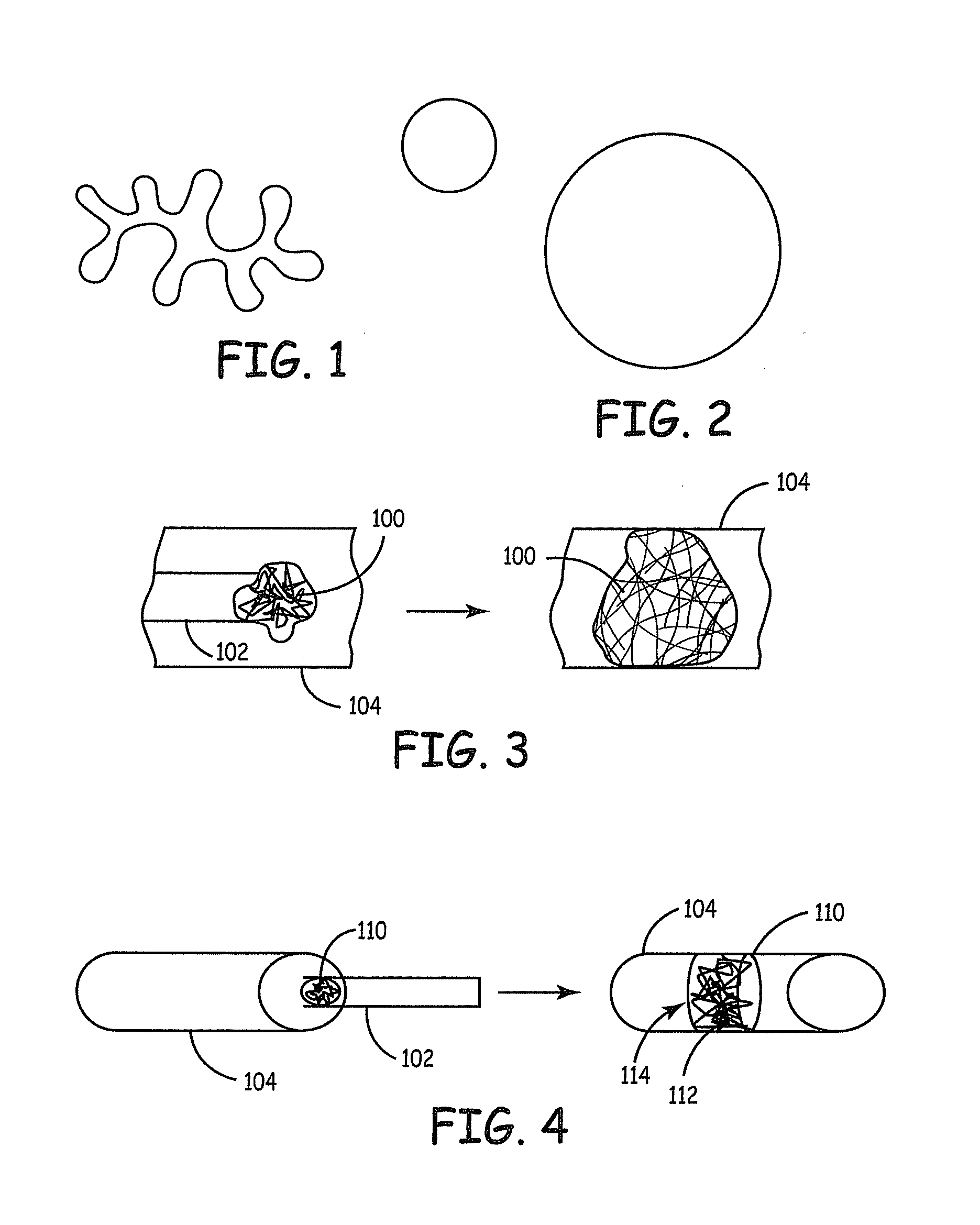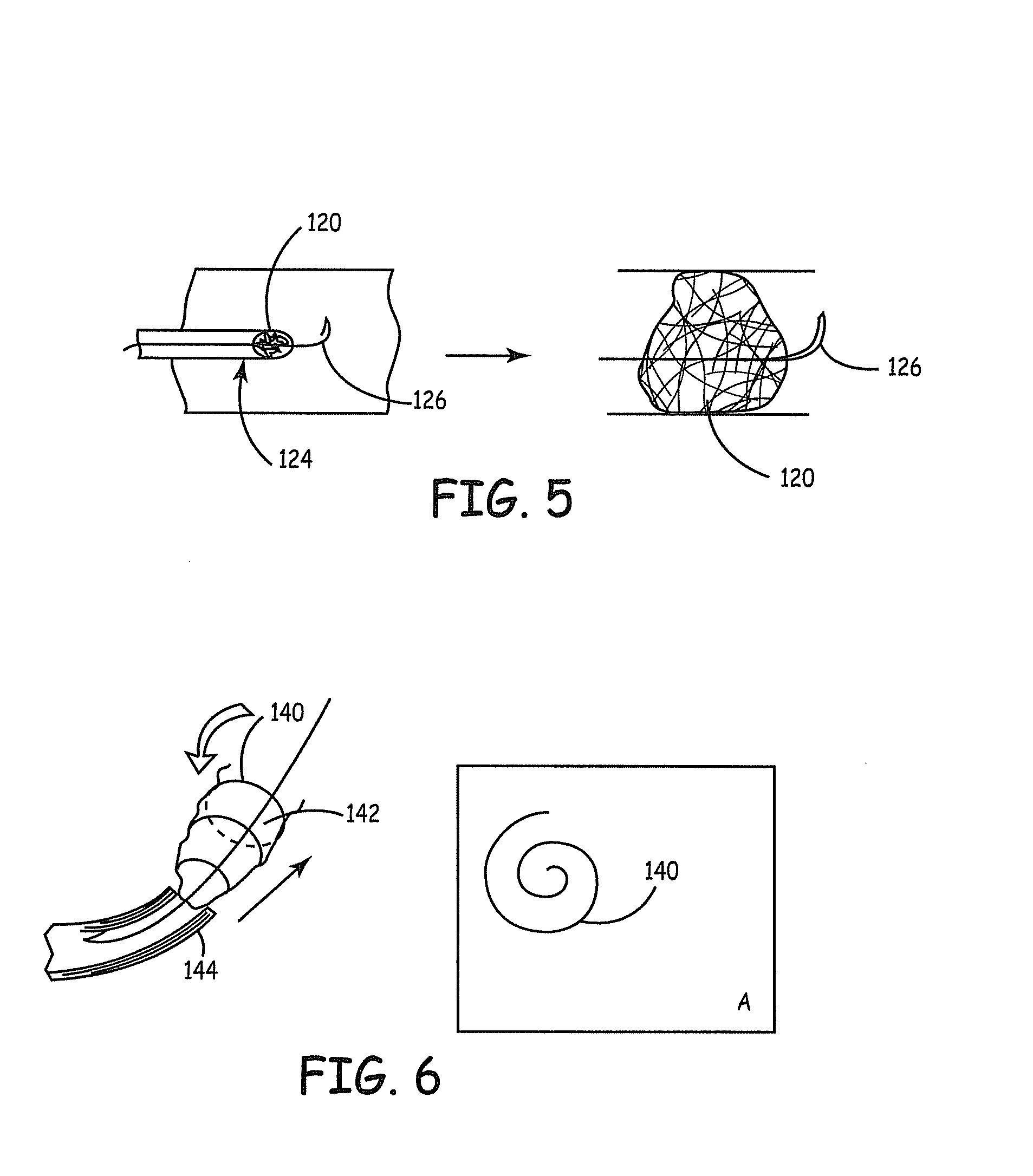Fiber based embolism protection device
a protection device and fiber technology, applied in the field of fiber based embolism protection devices, can solve the problems of localized cell death or microinfarct, stroke leading to confusion, paralysis, paralysis, etc., and achieve meaningful long-term clinical benefits, prevent ischemic complications, and reduce platelet aggregation
- Summary
- Abstract
- Description
- Claims
- Application Information
AI Technical Summary
Benefits of technology
Problems solved by technology
Method used
Image
Examples
example 1
SCF Fibers Biological Agent Absorption and Delivery
a. Loading the Fiber
[0192] This example demonstrates the capacity of SCF fibers to deliver higher quantities of biologically agent than round fibers. In this experiment, bovine serum albumin (albumin) was used. Albumin, a biological serum protein, was chosen because it has a similar molecular weight to that of TPA.
[0193] Two different cross-sectional geometries were evaluated. Group # 1 consisted of standard round fibers and group #2 insisted of the SCF fibers (specifically 4DGT™ fibers, Fiber Innovation Technology, Inc. Johnson City Tenn.). The cross sections of the fibers are shown schematically in FIGS. 1 and 2. Both fiber were six denier polyester fibers with similar surface finishes. Six-fiber bundles (3 from each group) of approximately the same size were weighted. (See Table 1.) Samples were labeled and placed in 15 ml polymer BD Falcon® centrifuge tube. A 5 ml quantity of (4 mg per ml albumin solution prepared from Bovin...
example 2
Solution Tracking Along the Fibers Grooves
[0198] The following example demonstrates the feasibility of applying a biological agent, which will track along the grooves in the fiber to provide greater agent availability within the device. This experiment will demonstrate that a round fiber did not provide similar increased agent availability. Two different cross-sectional fiber geometries were evaluated. Group # 1 fibers were standard round fibers, and group #2 fibers was the SCF fibers (specifically 4DG™ fibers, Fiber Innovation Technology, Inc. Johnson City Tenn.). Both fiber types were six denier polyester fibers with similar surface finishes. Two bundles of fibers were aligned. The fibers were bound at both ends and then compressed slightly to formulate a bulb like appearance. One end of the fibers was then attached to a syringe, which contained Coomassie Blue (CB) (Coomassie Brilliant Blue Bio-Rad Labratories, Hercules, Calif. 94547 in distilled water). The dye was injected into...
example 3
Evaluation with an In Vitro Flow Loop
[0200] This example demonstrates the utility of an in vitro flow loop for evaluation of an embolism protection device as well as provides an evaluation of two embodiments of an embolism protection device, one with incorporated tPA and one without incorporated tPA.
[0201] The interrupted flow loop was developed to mimic the environment of a native coronary artery. The apparatus consisted of four components: a circulation unit, the embolism protection device, the blood / media, and the emboli. The flow loop was constructed as indicated in FIG. 42. The circulation unit had a heated reservoir 500 holding blood and media 502, tubing 504, a pump 506, injection ports 503, 510 and a collection vessel 512. Embolism protection device 514 was held in a fixture 516 within tubing 504. Flow through the system is noted in FIG. 42 with four flow arrows.
[0202] Embolism protection device 514 was formed with two sections of structure. The layered system for purpose...
PUM
 Login to View More
Login to View More Abstract
Description
Claims
Application Information
 Login to View More
Login to View More - R&D
- Intellectual Property
- Life Sciences
- Materials
- Tech Scout
- Unparalleled Data Quality
- Higher Quality Content
- 60% Fewer Hallucinations
Browse by: Latest US Patents, China's latest patents, Technical Efficacy Thesaurus, Application Domain, Technology Topic, Popular Technical Reports.
© 2025 PatSnap. All rights reserved.Legal|Privacy policy|Modern Slavery Act Transparency Statement|Sitemap|About US| Contact US: help@patsnap.com



